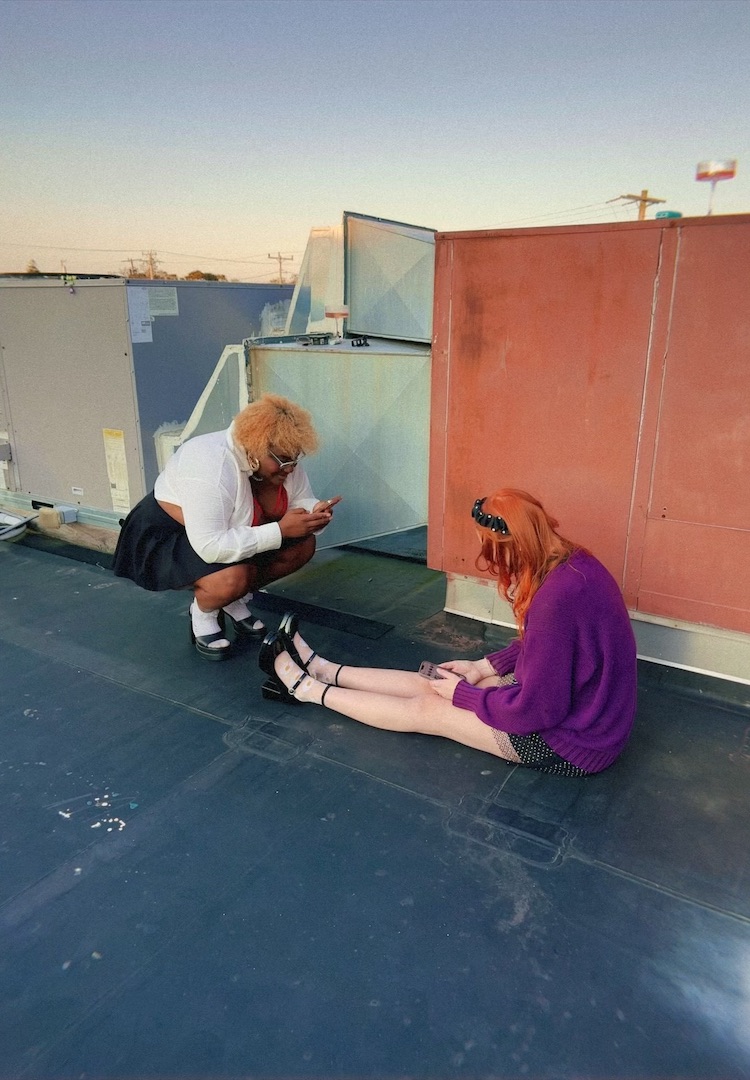Why are we letting other people dictate what we consider to be a “good” book?
PHOTOGRAPHY BY GEORGIA SMEDLEY FOR SAUCE MAGAZINE
WORDS BY SUNNY CHISHOLM
The gatekeeping of books needs to stop.
For me, isolation has been both a blessing and a curse. The gift of more spare time – which is something we were always longing for prior to life in lockdown – has made me embarrassingly aware of how few hobbies I have.
Beyond catching up on much-needed sleep and indulging in excessive and time-consuming self-care routines just for the sake of it, I’ve noticed that more spare time for me really means more time spent on TikTok and bingeing Love Island, which doesn’t make me feel particularly productive.
To combat the alarming increase in screen time, I turned to an old, forgotten love of mine: reading. During Victoria’s first lockdown, I participated in a book exchange and was pleasantly surprised by the number of fantastic titles I received in return, by the likes of Margaret Atwood, Joan Didion, Dolly Alderton, Tim Winton, Trent Dalton and Jack Kerouac.
Lockdown 2.0 presented as the perfect opportunity to make a start on these, and like anything in life, once I finally began it was so easy to keep going – I found myself in an all-consuming trance.
Reading immediately swallowed my evenings whole and after a fortnight in lockdown, I’d ploughed through five books, a mixture of memoirs and fiction, and relished the feeling that comes with actively engaging in something. I felt inspired, better informed and better connected to other people by reading about shared experiences and shared thoughts.
Although reading is something that’s typically done alone, it has the power to make you feel the furthest thing from lonely because books add to our understanding of the human experience. Books can be cathartic and validating, making the reader feel seen, understood and comforted in the knowledge that complete strangers are able to so eloquently put into words thoughts that they’ve always had.
Because I was pretty pleased with my efforts, and because we live in an age of instant gratification, I thought that flexing my newly earned intellectual points on social media would provide me with a good hit of serotonin (which it totally did). I shared a photo of my book stack (AKA #humblebrag) to Instagram and had a friend comment saying that my stack was much cooler than hers.
The “coolness” of my stack was no accident, considering I deliberately omitted my own “uncool” books from the photo because, as we all know by now, social media is a heavily curated highlights-reel and not a reflection of reality. My real-life stack features The Hunger Games trilogy and a collection of airport literature, which are considered the lowest of brows when it comes to respectable reading.
But this got me thinking – when did Instagram, a visual and creative platform in its essence, become an intellectual pissing contest? What makes a book cool, and beyond that, what makes a book uncool? And why are we gatekeeping books of all things?
Now, when I refer to a “cool” book I’m talking about the trendy, best-selling copies we see blasted on social media, which readers proudly share with their followers as if announcing the birth of a child. You know the ones and you’ve seen the covers: Sally Rooney’s Conversations with Friends and Normal People, Celeste Ng’s Little Fires Everywhere, Delia Owens’ Where the Crawdads Sing, Pandora Sykes’ How Do We Know We’re Doing It Right?, Brie Lee’s Eggshell Skull, Liane Moriarty’s Big Little Lies and Brit Bennett’s Vanishing Half.

Sunny’s book stack
And while these titles so sensitively explore the ugliness of racism, classism, sexism and domestic violence, and while I’m so pleased to see female authors celebrated and receiving the accolades they deserve, it begs the question: what propels these novels into instant fame?
I’d say it comes down to two things: equal parts celebrity endorsement (book clubs hosted by Reese Witherspoon, Oprah and Emma Watson spring to mind) and social media shareability (read: how aesthetically pleasing the cover is). But despite these books being awarded popular culture’s tick of approval and landing themselves onto international bestseller lists, wanky literary critics still have the prerogative to decide that these titles aren’t deserving of their peak popularity, and in fact aren’t true “literature” at all.
With this in mind, the next question is what makes a ‘legitimate’ piece of literature? Who decides which lens we get to view the world through? And why do they get the final say?
Despite Donna Tartt’s Pulitzer Prize-winning Goldfinch selling 1.5 million copies within its first year of publishing and securing a film adaptation, the most credible critics from the most prestigious literary publications dismissed its success completely, with The New Yorker’s James Wood alleging “its tone, language and story belong in children’s literature” and Lorin Stein of The Paris Review suggesting it “deals in [clichés]”.
But believe it or not, the predominantly straight, wealthy, white, cisgender men who critique these books project their own agendas and rarely have your best interests at heart. They don’t care whether you feel represented in literature. They’re unlikely to have the same lived experiences as you, so it’s unlikely they’ll connect with a book in the same way that you do.
It’s as if there’s this constant tug of war between the self-appointed high priests of literature and the social media flexers (myself included) and then you, dear reader, who is the rope.
So I want to remind you that you have the agency to decide what it is you like to read. In fact, there’s nobody else more qualified or informed to make this decision. So put your feet up, immerse yourself in the latest Twilight saga instalment and call it a day.













